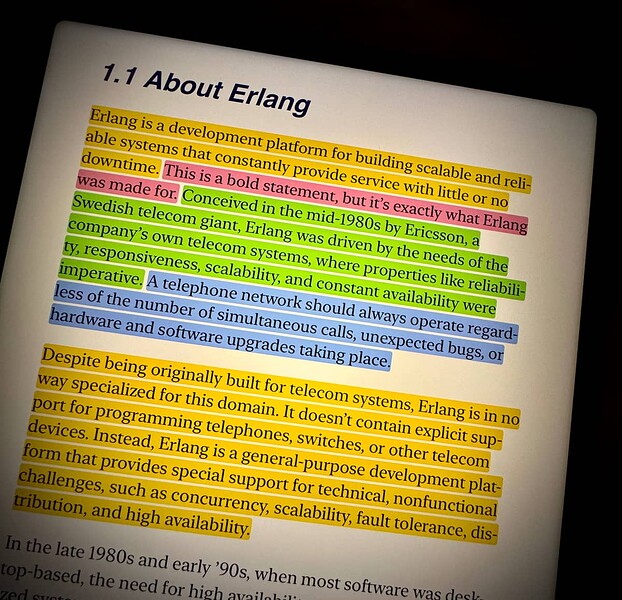Some excellent points already in this thread, and since it’s open on my device (I haven’t been able to resist it!) I hope @sasajuric won’t mind be showing you some of what he says in his book - I read it last night and immediately thought of this thread!
So technically, there are few languages and runtimes that come close to Erlang and Elixir, but there’s more to Elixir than just technical merit. It’s something I hope to cover in a blog post one day but one of my favourite things is how it, and projects like Phoenix, show you a better way.
Often when programming in another language I used to think to myself, surely there is a better way!? And that’s exactly one of the things I felt Elixir, with people like José and Chris, were promising - because they came from the same languages and saw the same pain points and issues we did.
This is why you hear things like Phoenix is not your app, and why Elixir and Phoenix are a little bit more explicit - there’s less ‘magic’, and the magic there is is arguably better balanced. I also like how we’ve got a few different ways to build apps, so you could have a Phoenix monolith (so a bit like Rails), and at the other end you could have an app made with Umbrellas (or Prag Dave’s microservices inspired architecture as per his Elixir for Programmers course) and then, in the middle, you’ve got Phoenix Contexts, which is an example of what I mean by Elixir (in this case Phoenix) showing you a ‘better (sane) way’.
And there’s loads more! (But you’ll have to wait for my blog post if you’re interested in my thoughts on this! ![]() )
)
In the meantime, why not join our Elixir In Action Book Club? Saša Jurić, the author of the book is taking part as well as the mighty @bjorng - who is not only one of the core team members of Erlang but also one of the 'B’s in BEAM ![]()





















